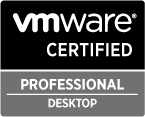
Reading Time: 2 minutes Finally, after a lot of weeks of waiting, is arrived (at 22.25) the results of the VCP5 beta exam: Congratulations! You have passed the new VMware Certified Professional on vSphere 5 (VCP5) certification exam. Thank you for your participation in the beta exam. Your input and participation were invaluable to this process. We will be adding this certification to your transcript within the next three weeks. You will receive an email notification with additional instructions once your education transcript has been updated. Physical certificates will be sent after your shipping address has been confirmed. Please […]


